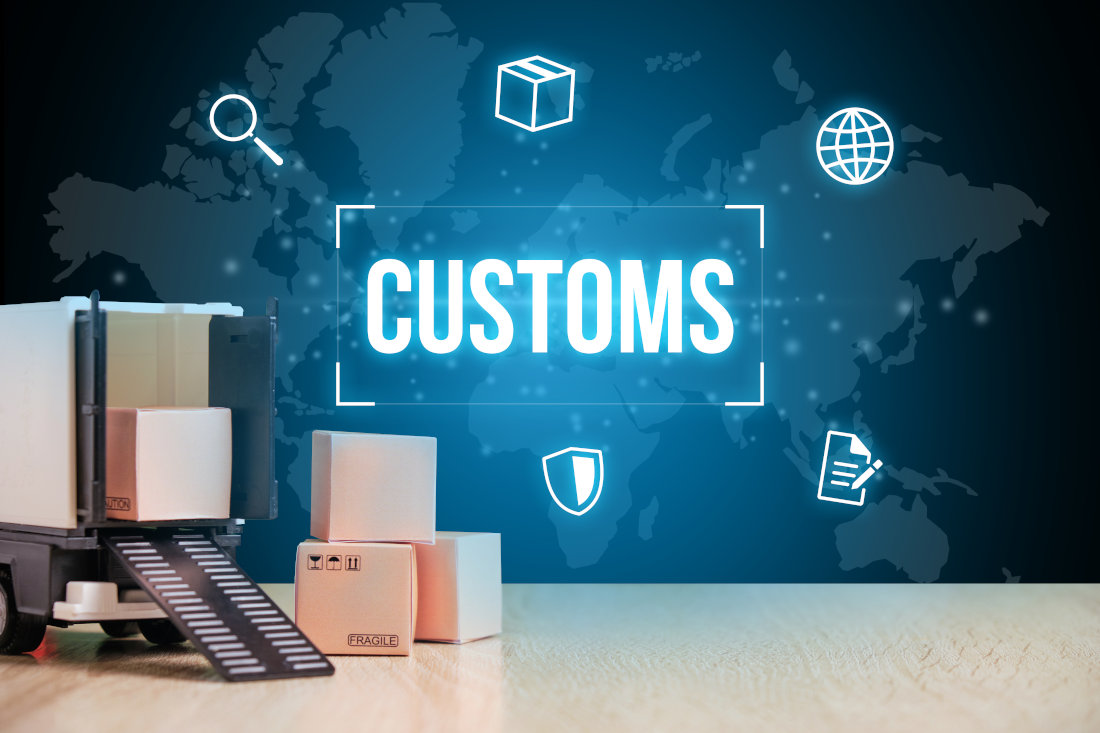For many people, the term ‘customs’ is linked to some checks that may or may not appear to be done when you travel abroad. For those of us involved with the import and export of goods, clearing customs is a very specific process that is always present and needs to be addressed correctly.
What is customs clearance?
Customs clearance is the process of taking goods through a country’s customs authority, either to import (bring in) or export (take out) the items in a legal manner. To get goods through customs various export and import documents will need to be filled in correctly.
What is the customs clearance process?
Whilst the process in each country will vary in detail, the basic outline is similar:
- Goods arrive at the customs clearance area, for example a port.
- The accompanying documentation is checked, to ensure it is valid and complete.
- The goods are inspected, to ensure they match the documentation.
- Relevant duties, tariffs, taxes, and any arising costs are calculated and paid.
- The goods can then leave the customs clearance area for their onward journey.
Issues arising in anyone of these five steps can cause considerable delay and cost. This is one of the reasons that ensuring the correct documentation is fully completed, is vital.
How long does customs clearance take?
With the huge volume of shipments that cross borders each day, everyone is keen for customs clearance to happen quickly and efficiently. Whilst a typical clearance might only take a matter of minutes or a few hours, this can extend into days and weeks if there is missing documentation, or a more detailed inspection of the goods is required. In this case, the goods will be held for as long as deemed necessary by the clearance authority. It is for this reason that many companies choose to use a logistics partner with significant customs clearance experience.
Do customs check every package?
The answer to this question will depend on which country is involved, but it is wise to assume the answer is ‘yes’. The widespread use of x-ray scanning, sniffer dogs and random checking means that all goods will at least attract some scrutiny. Poor or damaged packaging, or incomplete paperwork may attract more thorough checks, which may lead to longer clearance times. Just because lower value goods might not attract a tariff or duty, does not mean they will not be inspected.
What documentation is required?
The exact documentation required for customs clearance depends on the nature of the goods being shipped and the countries involved. For both import and export, the list is likely to include a purchase order from the buyer, a sales invoice, certificate of origin, packing list and details of the shipping route to date. Certain goods require specific import and export licences, in which case proof of these will need to be included. Knowing the exact documentation requirements for different classes of goods, in different geographies, is one of the services that a logistics partner can offer.
How can AGI Global Logistics help?
Our experience in global shipping means we can help ensure your customs clearance goes as smoothly as possible. We have extensive experience of working with HM Revenue and Customs and have gathered an in-depth understanding of customs regulations, quotas and allowances to ensure a cost-effective passage of goods. Our customs clearance specialists work daily with customers and other haulage providers, who appreciate our customs clearance expertise. We work in harmony with HMRC through our sophisticated, interactive Customs developed software. We use the very latest IT Systems to research and develop in line with the ever-changing requirements.
To find out more about how we can help you, please get in touch. We would love to hear from you.
